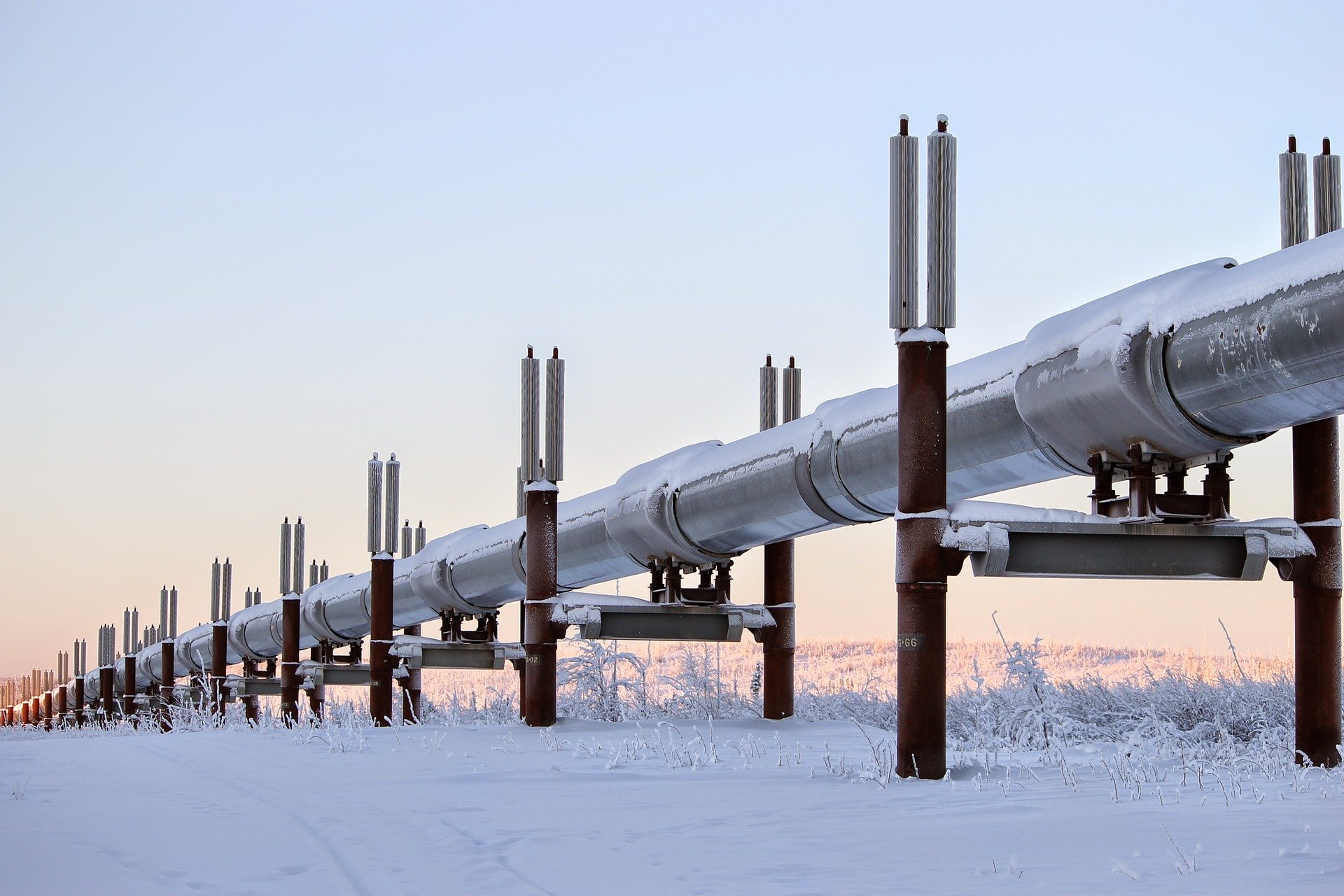

- Midstream companies will cut back on capital spending in 2022 significantly by over 50% from 2021
The projections for capital spending in 2022 by large midstream players show a consistent trend of cutting back from 2021 spending. For example, Kinder Morgan expects to cut $1 billion in capital spending while Enbridge has announced a capex target that is $4.3 billion less than in 2021. This is in large part due to companies choosing to be fiscally responsible and focus on investor returns after a large year of expansion projects in 2021. This is also reflective of lower rig counts due to the higher levels of spending discipline amongst upstream operators meaning midstream companies were able to use 2021 as a “catch up” year and can lower their expansion projects now until production picks back up. However, the rig count in the U.S. has slowly been creeping back but has yet to reach pre-pandemic numbers. Finally, the allocation of capital spending in 2022 may shift a bit towards energy transition with spending on areas such as renewable natural gas and cutting Scope 1 emissions.
2. Midstream capacity in the U.S. will increase but at a slower pace in 2022
In the US, there are currently only two planned expansion projects expected to come online in 2022 which will add 930,000 barrels per day of crude oil evacuation capacity. This number could go up, but it is expected to remain below the 3.4 million barrels per day of capacity that was scheduled to be completed in 2021. This is consistent with midstream companies’ cuts to capital spending. Both NGL and natural gas capacity are also expected to be on the low side this year with 45,000 barrels per day expected in NGL capacity expansion and 14.7 billion standard cubic feet per day for gas.
3. Oil’s production capacity is waiting on production to catch back up
As it stands right now, crude oil takeaway capacity is still building but midstream operators have put many projects on hold to wait for production to catch back up. The Permian basin’s crude takeaway capacity is going to remain higher than production until mid-2025 according to ADI’s projections and Bakken and Eagle Ford could see capacity remaining above production through 2025 as well.
4. Natural gas’ takeaway capacity constraints are expected to continue in 2022
As projects are slowing down, midstream companies remain behind gas production. In the Permian basin, they could be behind by as much as 3 billion cubic feet per day if no new projects come online. In the Bakken, we expect capacity to meet production at 3.3 billion cubic feet per day, but to quickly be passed again by the start of 2023. The Appalachian region outlook is not much better, as capacity constraints may cause seasonal shut ins in the coming years.
5. The natural gas liquids takeaway capacity will be more reflective of crude oil than gas
NGL production is expected to ramp up in 2022 from 5.38 to 5.84 million barrels per day. Despite this, takeaway capacity should be able to account for it all as it is currently 7 million barrels per day ahead of production.
6. Midstream growth in a few international markets is expected to be higher than in the U.S.
Midstream projects are expected to be announced in South America to meet the growing production they are experiencing in some of their offshore oil plays. Projects are popular in the region due to quick payback times and low breakeven prices in countries like Guyana where offshore activity has been hectic. The country expects to be producing around 750,000 barrels per day by 2025 leaving open the door for midstream infrastructure to be put in place to accommodate the new production.
In Europe, although new midstream capacity additions will be limited, a lot of attention will converge on the controversial Nord Stream 2 gas pipeline that seeks to deliver another 150 million scfd of natural gas from Russia to Germany. Although the pipeline’s construction is more or less complete, Germany has not approved operations yet and the decision is subject to a number of geopolitical factors.
7. Midstream looks to make its mark in energy transition with projects in carbon capture and storage
Along with the oil & gas industry, midstream is trying to shift its focus onto energy transition projects. Many operators are motivated by the push from investors as well as new tax credits from the government. A few midstream companies are investigating their role in carbon capture and sequestration projects. For example, Energy Transfer LP has already begun working on a project at the Marcus Hook liquids terminal in Pennsylvania. By partnered with oil downstream company, Sunoco Logistics, to transform the Marcus Hook liquids terminal from a storied refinery to an NGL hub.
8. Hydrogen is also of interest to midstream operators exploring energy transition opportunities
Another area in the energy transition that we expect to see midstream grow in is hydrogen transportation. New policies such as the potential for federal hydrogen tax credits in the coming year could further intensity interest in hydrogen. It has been suggested that due to the large pre-existing natural gas pipeline infrastructure, it makes sense to convert the pipes to move a natural gas hydrogen blend rather than build entirely new hydrogen pipeline infrastructure. This has come with its own set of issues, though, as the differences between the gases would still cost what many consider to be an unworthy amount of capital to calibrate the pipelines to take the hydrogen.
Despite this, companies like Kinder Morgan are currently investigating ways to see if it can work. Some players are also beginning to look at hydrogen as a fuel option to clean up their operations. This is primarily being looked at to power compression and facility power generators. Outside of hydrogen, a few companies are beginning to investigate renewable investment opportunities such as Kinder Morgan’s investments in renewable natural gas.
9. New 2022 policies could slow midstream capacity growth in the coming years in the U.S. and Europe
New regulations and policies could slow the U.S. midstream oil and gas industry. The EPA is rewriting a rule made under the Trump administration that changed how the Clean Water Act is viewed. This will allow states the ability to put regulations on where pipelines can be built and hold up projects more easily.
Regarding emissions, the discussion of more stringent flaring and methane emissions regulations in the United States was had at state and federal levels last year, with New Mexico, Colorado, and North Dakota showing the greatest interest in cutting down flaring and methane emissions. In January 2021, President Biden signed an executive order that encouraged the Environmental Protection Agency to propose new regulations to reduce methane emissions in the oil and gas sector before the end of September 2021. Without fail, the EPA devised a plan and proposed new regulations that are currently being evaluated. These proposed regulations mention the importance of cutting down flaring and list some action items that could be enforced in the final rule sometime this year. The agency also intends to issue a supplemental proposal this year that will support the regulations that were proposed last year.
Internationally, the European Union is also indirectly tackling the flaring problem by enforcing regulations aimed at reducing methane emissions from the oil and gas industry. International groups that have prominent members from both the public and private sector also exist to help reduce methane emissions and flaring in troubled countries, such as Nigeria. It is expected that efforts to reduce methane emissions will continue to be led in 2022, which will consequently cast a spotlight on flaring activity and regulations. Europe is also in the middle of handling the future of its natural gas infrastructure which is currently centered around Nord Stream 2. The U.S. government has dropped sanctions against Gazprom, but the European Union policies prevent both the pipeline and gas supply to be owned by the same company, holding up Russia’s efforts. If completed it will give Russia a stronger role in European gas prices and supply, and limit opportunities for further demand growth for U.S. LNG.
10. Midstream companies continue to add capacity for much needed gas processing and little needed NGL fractionators
As natural gas capacity will continue to be tight in 2022, midstream companies are rolling out projects to add new and move current gas processing facilities to high production areas in the Permian, Bakken, and Appalachian regions. In the Permian region, there are over 50 new processing facility projects under way on top of companies building pipeline infrastructure to run near pre-existing processing facilities. For example, Summit Midstream and Exxon’s XTO Energy are working on a pipeline that will run past 30 processing facilities with a total processing capacity of around 10 billion cubic feet per day. NGL fractionators, however, do not share this need for expansion. There is already an overbuild of capacity for the NGL production and more projects are still scheduled to come. We therefore anticipate strong opportunities for further exports of NGL components in 2022.
11. With Europe’s lack of natural gas this winter, we could see natural gas storage capacity increase
It is unlikely that natural gas storage in the U.S. will ramp back up anytime soon. Despite the increase in renewable energy plants needing backup power and winter storm Uri causing concern for utility companies, the supply of natural gas in the U.S. still has companies comfortable as they do not expect another Uri like event for quite some time and renewable energy is still growing. However, Europe’s winter gas shortages may provide a perfect launch point for the natural gas storage markets as capacity will likely increase in 2022. Due to the lack of supply in Europe except from Russia, as well as leading the world in renewable energy efforts, Europe is the perfect region for new natural gas storage in projects.
ADI Analytics will continue to monitor, track, and research midstream oil and gas markets and players. Please review our expertise in this segment and contact us to learn more about our research.
By Thomas Dennis





















